Gardeners were long taught that the best way to maintain a garden is to turn the soil using a tiller, cultivator, or spade. Today, we know better. Deep tilling destroys the valuable mycorrhizal networks and the ideal soil structure that gardeners are trying to achieve for healthier plants, more productive soil, proper drainage, and fewer pest and disease issues.
Rather than tilling amendments down into the soil, no-till gardens are built from the ground up and improved every growing season as more compost and organic mulch is added. No-till gardening techniques build up soil with organic materials, such as leaves, straw, wood chips, yard waste, and finished compost. In time, these inputs create fertile soil with good tilth — the ideal conditions for growing vegetables and more.
Organic materials become food and habitat for fungi and other microorganisms. Not only do these microbes break materials down into plant-available nutrients, they also move nutrients through soil to roots where plants need them most.
There are billions of microbes living in even the smallest garden. The life within the soil is known as the soil food web, and the less it is disturbed through tilling and digging, the better. These microbes have a mutually beneficial relationship with plants. When plants need resources, they secrete exudates through their roots into the soil. Mycorrhizae deliver resources to the plants and are rewarded with sugars from plants.
Why No-Till Gardening?
Tilling not only breaks the mycorrhizal pathways in soil and the pore space that provides permeability and holds moisture, it destroys living roots that promote microbe proliferation.
Turning soil can also accelerate the breakdown of organic matter — like how turning compost speeds along the decomposition process. While speedy decomposition makes compost efficiently, it is not the best environment for tender seedlings. And when organic material is consumed quickly, plants get a jolt of nutrients — more than they could possibly take up in a short window — and are then left with depleted soil that can’t sustain a healthy microbe population and vigorous plants.
If you’ve tilled before, you’ve seen how it leads to more weeds. That’s because tilling uncovers the thousands and thousands of weed seeds in the garden and exposes them to the light and air they need to germinate. Without tilling, those seeds would remain dormant indefinitely.
Tilling also has implications when it comes to climate change because the process releases carbon sequestered in soil into the atmosphere.
How To No-Till Garden
Now that you understand the why-do behind no-till gardening, here’s the how-to.
No-Till Tips for Established Gardens
If you already have a garden established, it’s easy to adopt no-till methods. Naturally, it begins with ditching your tiller. Rather than tilling the garden before spring planting, top-dress the soil with an inch or so of finished compost — like Soil³ humus compost. The compost may be scratched into the first half inch or 1 inch of soil, but even that is unnecessary. Watering and microbial activity will work the nutrients in the compost deeper into the soil.
When planting, only dig as deep as seeds or transplants require. Cover the bare soil around plants with shredded leaves, loose straw, pine bark, or arborist’s wood chips. The mulch will not only suppress weeds and protect the soil from erosion and compaction — among other benefits — it will encourage microbial activity and earthworms.
No-Till Tips for New Gardens
To start a new no-dig garden, pick a spot that gets 6–8 hours of direct sunlight. Flatten cardboard boxes, remove the staples and tape, and lay them down over the grass or whatever other plants are currently growing there.
On top of the cardboard, lay down leaves, straw, grass clippings and other organic material (aka plant debris) that you have available. The more variety, the better.

Here we see cardboard laid over a weedy lawn and me spreading shredded leaves on top of the cardboard.
Then, top it off with a 6-inch layer of Soil³ humus compost. You can plant directly into the compost, and follow up with mulch.
To recap the layers:
- Claim your new ground (weedy spots not a problem!)
- Lay out your cardboard
- Cover cardboard with non-composted plant debris from your yard/garden
- Cover the debris with a generous layer of Soil³ compost
- Protect these layers with a final layer of mulch
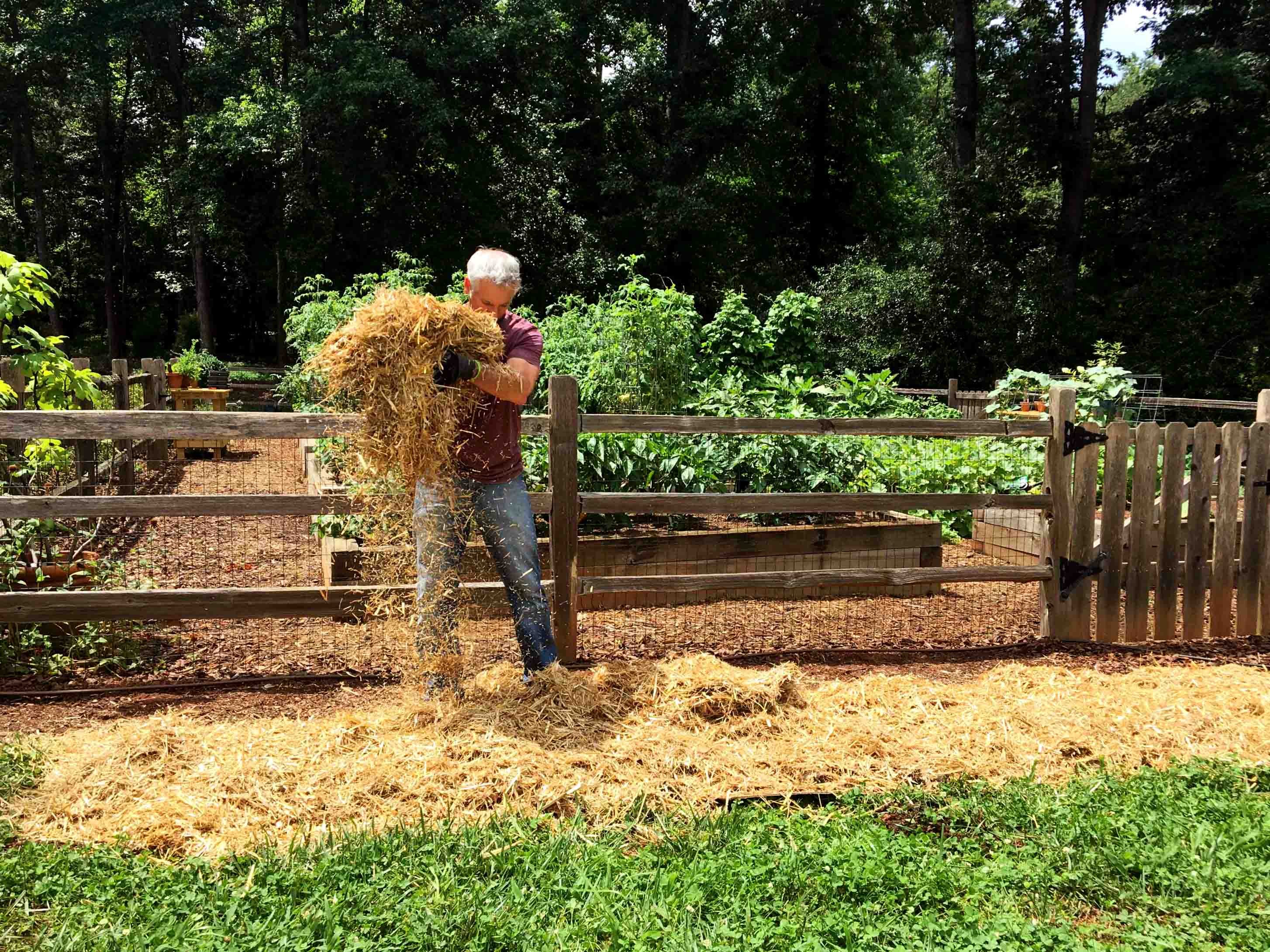
Then I top it off with a final layer of straw mulch.
When the next growing season starts, apply an inch of compost over any remaining mulch that has yet to break down, and cover with fresh mulch again. Every time you repeat this layering process, the garden will improve and the soil quality will just keep getting better and better.
Because you never need to dig below the surface of the native soil, the no-till method can overcome challenging environments that are very rocky or are either too quick or too slow to drain. This opens up new opportunities for gardeners to maximize the use of their space, all while requiring less labor spent on digging and weeding.
All photos courtesy of joegardener.com.


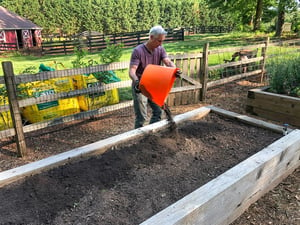



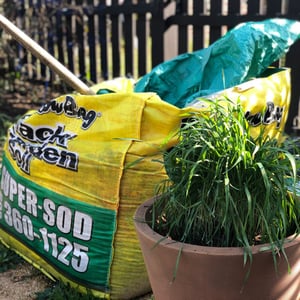

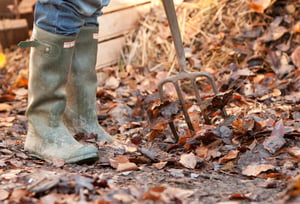
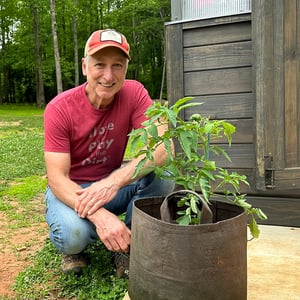
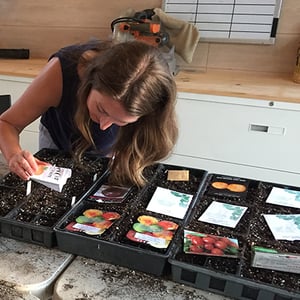
Did this help you out? Have any questions for clarity? Leave a comment below!